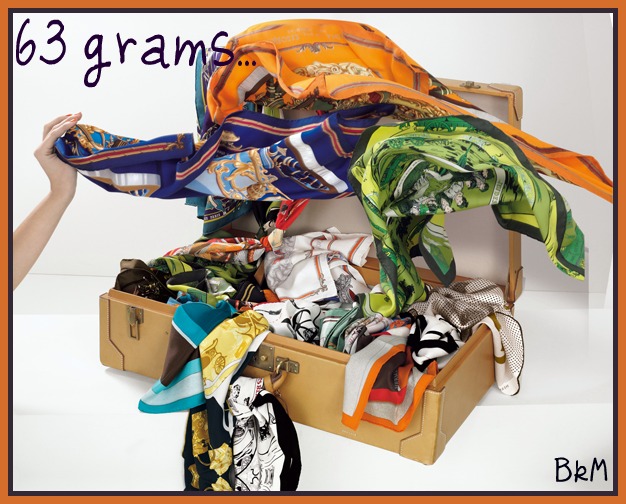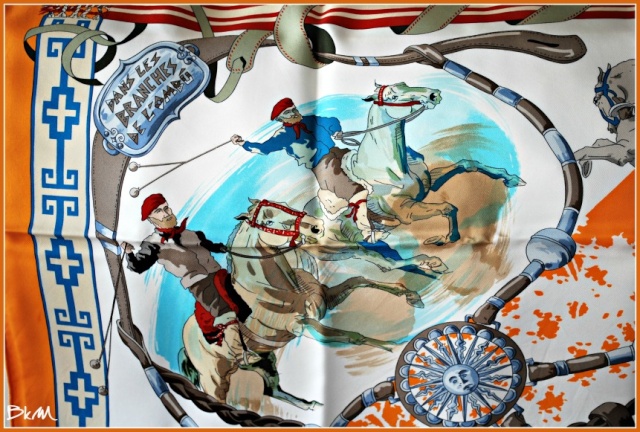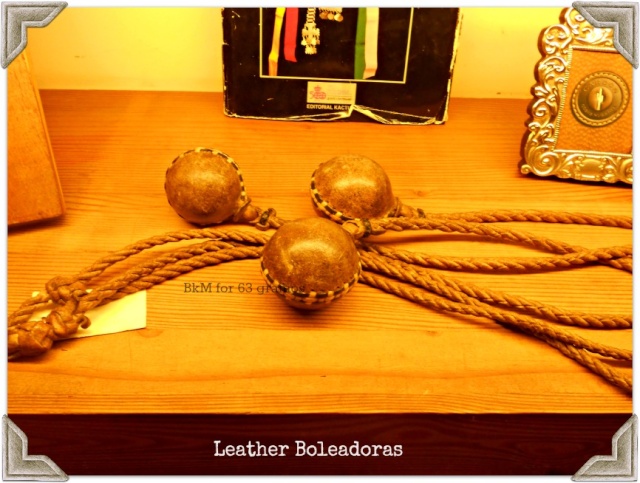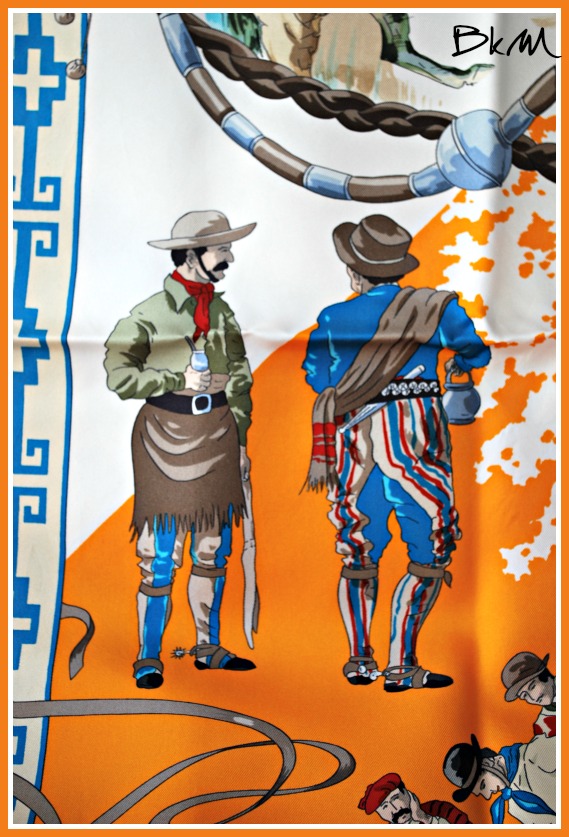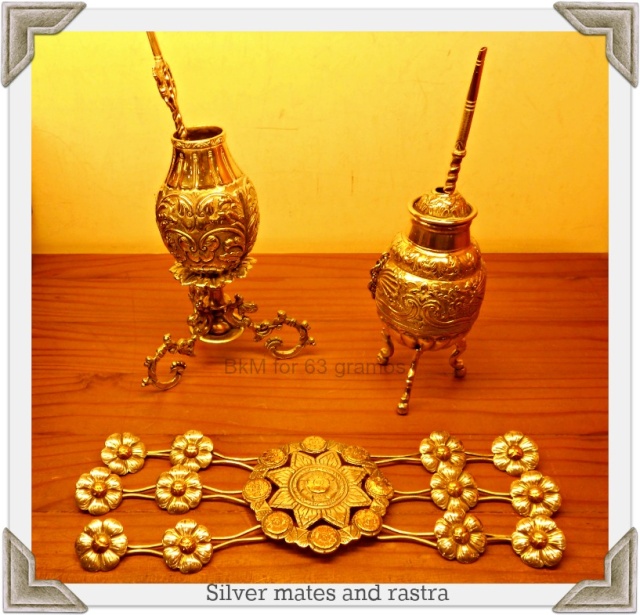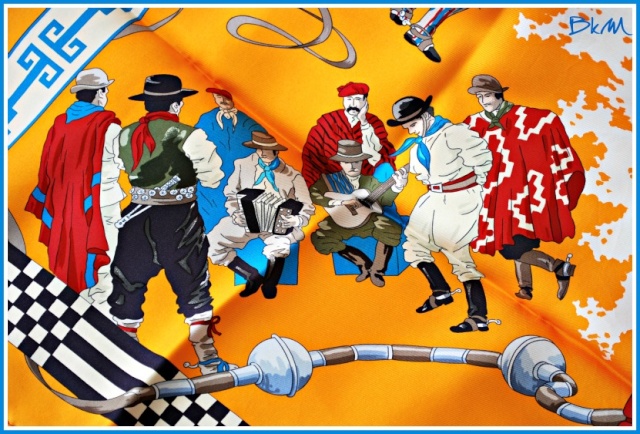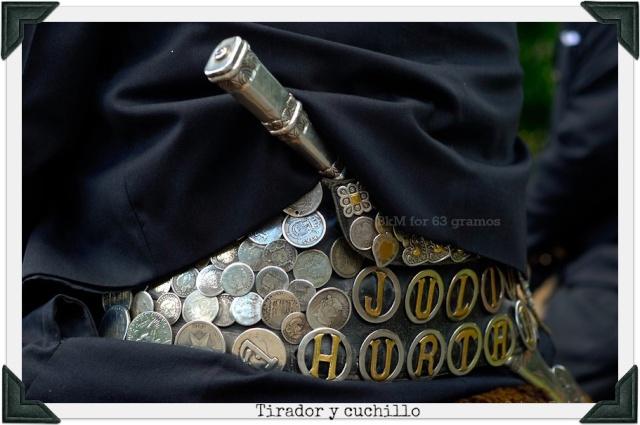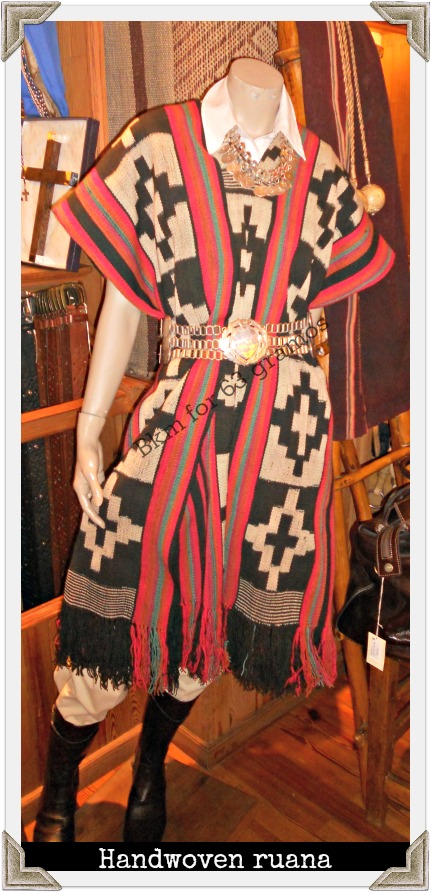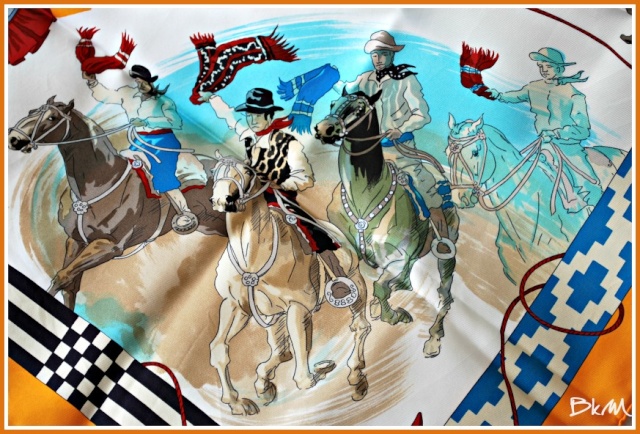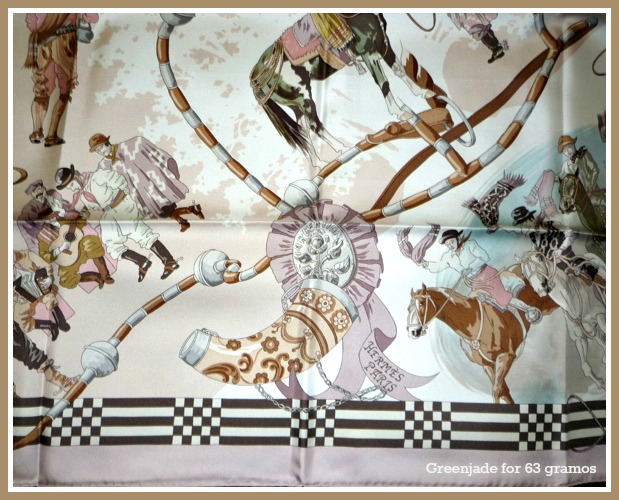Hubert de Watrigant
First issued: 2005
This could be one of my latest posts from Argentina, my adoptive country for more than fourteen years. As some of you already know, I'm moving back to Europe after Christmas (Yes, back home!) May this entry be a tribute to this country, its culture and folklore embodied in the figure of the gaucho.
As usual, Hubert de Watrigant made an incredible research on the theme chosen for the design, which shows great knowledge of the gaucho culture as we saw in his other Argentinian themed design Lujo Criollo (2005) (See more about Watrigant's work and biography here: Hubert de Watrigant)
At the center of the scarf there is a silhouette of an Ombú tree which gives the title to the scarf, Under the Branches of the Ombú. This tree is very common in Argentina, actually they are very popular spots in Buenos Aires for the visitors to take pictures of their impressive trunks:
The ombú has an umbrella-like canopy that spreads to a girth of 12 to 15 meters (40 to 50 feet) and can attain a height of 12 to 18 meters (40 to 60 feet), it's considered a symbol for the gaucho culture.
Hubert de Watrigant masters the art of drawing horses and his love for country life can be noticed in many of his designs, in this particular scarf he has perfectly combined both passions presenting an impressive array of gaucho features. The title of the scarf conveys the message of people resting and enjoying life after a lot of hard work driving herd throughout the pampas.
Gauchos are extremely proud of what they call lujos criollos (freely translated as Creole luxuries or fineries) which include different items such as boleadoras, estribos, chifles, tiradores, rastras, mates, ponchos, espuelas and quite a lot of others. Watrigant has brilliantly depicted most of them in this design.
In this scene we can see two gauchos at full gallop waving boleadoras. Traditionally, they are primitive hunting tools made of cow leather but as many other gaucho items, they have also become pieces of art made of noble materials.
One of the most characteristics rituals of the gauchos is drinking mate:
Mate is prepared from steeping dried leaves of yerba mate in hot water, it is served with a metal straw (bombilla) from a shared hollow calabash gourd (mate). The gourd can also be made of different materials, silver for the gaucho finery.
Mate is traditionally drunk in a particular social setting, such as family gatherings or with friends. The same gourd (mate) and straw (bomba/bombilla) are used by everyone drinking. It is hard for a foreigner to become a mate drinker, but if you share mate with friends regularly it will soon be a part of your social life in Argentina.
Mate is traditionally drunk in a particular social setting, such as family gatherings or with friends. The same gourd (mate) and straw (bomba/bombilla) are used by everyone drinking. It is hard for a foreigner to become a mate drinker, but if you share mate with friends regularly it will soon be a part of your social life in Argentina.
This is a charming scene of a guitarreada. Gauchos are well known for their musical parties and traditional folklore. If you pay attention to the scene, you can see several key parts of the gaucho attire, such as the tiradores (wide leather sash covered with coins or other pieces of silver), fastened with rastras (big silver clasps) that hold the cuchillo o facón (knife):
The guitarreadas are usually held in the open after a good asado (barbecue), in these parties, the gauchos play traditional instruments and recite old poems.

It's impossible to imagine a gaucho without his poncho. Ponchos are handwoven pieces of llama or alpaca wool usually worn as a cape, but they can also be used as blankets for the freezing nights out in the open in La Pampa.
In addition to the poncho, this scene shows some important parts of the horse equipment such as headstall, stirrups, reins, blanket, etc.
In addition to the poncho, this scene shows some important parts of the horse equipment such as headstall, stirrups, reins, blanket, etc.
Nowadays antique ponchos are extremely valuable pieces, they are very sought after for interior decoration. The ponchos worn by women (usually opened at the front) are called ruanas.
Another typical activity of the gauchos is the jineteada, they are equestrian shows performing horse races and skill games:
I have borrowed the last picture from dear Sachiko from Greenjade who kindly allowed me to use it to illustrate the title of the scarf with a very different, more subtle color way.
The piece near the title is a chifle, a big cow horn used to transport liquids, especially brandy.
Another interesting detail of this part of the scarf is the ribbon displaying a thistle flower, the flor de cardo, is the national flower of Argentina.
Dans les Branches del'Ombú is not the only Argentinian themed Hermès scarf, to the best of my knowledge there are some others:
Dans les Branches del'Ombú is not the only Argentinian themed Hermès scarf, to the best of my knowledge there are some others:
Lujo Criollo by Hubert de Watrigant silk/cashmere PM 2005 GM 2011
Gaucho by Cathy Latham 1978
Gaucho (pochette) by J.Metz date unknown
Pampa by Jean de Fougerolle 1988
Argentine Diaguita et Guaraní by J.Y Merthier 1966
I'm saying goodbye for the time being Under the Branches of the Ombú in my yard.
Gaucho (pochette) by J.Metz date unknown
Pampa by Jean de Fougerolle 1988
Argentine Diaguita et Guaraní by J.Y Merthier 1966
I'm saying goodbye for the time being Under the Branches of the Ombú in my yard.
Many thanks to the manager of Cardon who kindly allowed me to take pictures in his beautiful store in Avenida Alvear 1841 in Buenos Aires.
